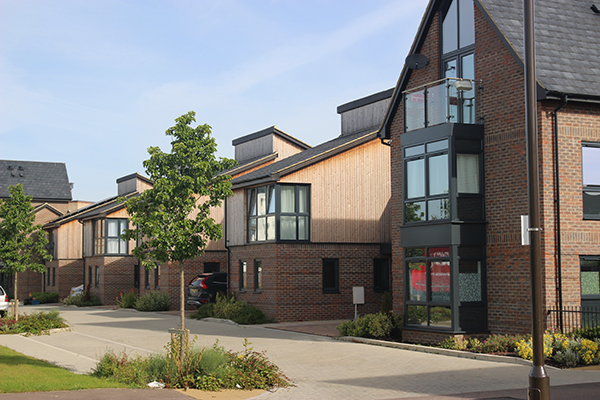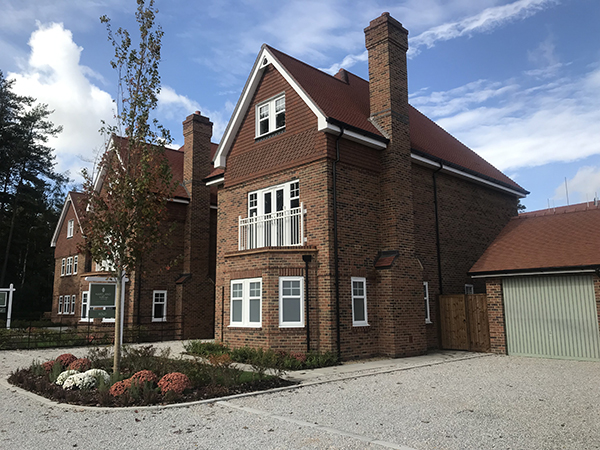 The Government published the consultation on the Future Homes and Building Standards last month. John Duckworth, Director of Commercial Sales, Deceuninck, argues that while at face value notional u-values have stayed the same, the ramifications for housing providers may be far reaching.
The Government published the consultation on the Future Homes and Building Standards last month. John Duckworth, Director of Commercial Sales, Deceuninck, argues that while at face value notional u-values have stayed the same, the ramifications for housing providers may be far reaching.
A consultation document has rarely been anticipated more. After four years of speculation, the Consultation on the Future Homes and Buildings Standards was finally published on 13th December.
Having been braced for a new notional value for new build of 0.8 W/m2K, the news that there would be no further increase in performance beyond the 1.2W/m2K introduced in the revision of Part L in June 2022, came as a surprise for an industry that had been gearing itself up for a step change in requirement.
“I think many in industry have seen the retention of the 1.2W/m2K requirement as a disappointment because as industry it is our role to look to the future, to innovate and to design and develop new and better windows and doors which require less energy and carbon in manufacture, and which deliver further carbon savings through life”, says John Duckworth, Director of Commercial Sales, Deceuninck.
“As we stand most window and door systems will just about get down to u-values of 1.2W/m2K with a standard double-glazed unit.
“There are clear benefits to this, you’re using a third less glass, there’s less weight in handling, hardware doesn’t have to be strengthened - things that add cost to windows and doors.
“The challenge is, that we may not end up with those savings because the consultation also proposes a change in how window and door u-values are worked out, which could push the industry and housing providers back to triple glazing and the increased costs associated with it.”
This is because for window and door specification, the consultation has an unexpected sting in its tail - The Home Energy Model.
This has ramifications almost as big for fabricators as any u-value of 0.8 W/m2K might have done because it has the potential to bring the industry back to exactly the same place - triple-glazing!
The proposed Home Energy Model is according to the authors of the consultation ‘based on the latest evidence and is more sophisticated than SAP’. In the belief that you get out, what you put in, they highlight that the use of the standard sizes to work out u-values is problematic.
The proposal instead is to use ‘either the actual size and configuration of the window or door, or measured using the appropriate hot box method set out in the BS EN ISO 12567 series’.

John continues: “This effectively means modelling each specific window configuration - and that creates a challenge because most of windows supplied in a real-world context are smaller than the ‘standard’ window configuration (1230x1480 open/fixed).
“The smaller the glazed area, the harder it is to achieve a u-value of 1.2 W/m2K. This is especially problematic where steel reinforcements are required.
“If the model is adopted, for a lot of window and door systems that brings us right back to where we started, triple-glazing.”
Homes make up around 14% of all of the UK’s emissions. With a commitment to cut total UK emissions by 80% relative to 1990 levels by 2050 under the Climate Change Act (2008) reducing household carbon emissions assumes critical importance.
This provides the backdrop to the changes to Part L seen in 2022, which introduced a new requirement of 1.2W/m2K for newbuild windows and doors with a glazed area of more than 60%; and 1.4W/m2K for replacement windows and doors.
“The point of the consultation, which runs to March is to get feedback from industry”, John continues. “Government has made its assessment that that more flexibility but also a more accurate and product specific approach, particularly to window and door specification will still deliver a reduction in the carbon footprint of new build homes.
“We need, however, to be aware of the law of unintended consequences and as an industry and partner to the housing sector, we should perhaps be more ambitious in the targets we are setting, particularly against the broader context of rising energy costs and fuel poverty.
“As a socially responsible business which is committed to positive environmental change, Deceuninck will continue to innovate regardless of regulation, developing new products which achieve consistently higher levels of energy efficiency - because ultimately, that is what end-users want.”
Deceuninck is one of a handful of UK window and door systems companies to already have the capability to deliver advanced levels of thermal performance.
Elegant its next generation window, for example, delivers a step change in performance achieving U-values as low as 0.8W/m2K.
Forming a key element of the systems company’s wider award-winning sustainability strategy the next generation fiberglass composite window system also delivers on aesthetics with contemporary minimalist features.
These replicate aluminium in an advanced, low maintenance and energy efficient, composite system and can also be combined with Decoroc, Deceuninck’s next generation finish, so fitted alongside aluminium products as part of dual-specification installations.

“We see the direction of travel pretty much one way. Societally we have some big commitments to make and if we don’t build new houses more sustainably – or retrofit them – we aren’t going to make them”, continues John.
This is consistent with the lead that Deceuninck has taken in the sustainability space. Having committed to the Science Based Targets scheme in 2022, its pledged to cut its CO2 emissions by 60% by 2030 on a 2021 baseline.
Lowering CO2 by 21%, down from 673,095 tonnes in 2021 to 530,836 tCO2e at the end of 2022, Deceuninck has championed sustainable manufacture.
This includes its advanced recycling and compounding facilities which allow the systems company to reprocess up to 45,000 tonnes of post-consumer and post-manufacturing PVC-U per year, which is the equivalent of preventing three million windows from going to landfill annually.
Use of recycled material also reduces CO2 emissions by 90,000 tonnes when compared to virgin feedstocks, as well as a 90% energy saving.
“We need to be doing more to lower emissions”, John continues. “We can’t kick the can down the road and right now it feels that we’re at a critical point.
“Given the contribution the emissions from our homes make to greenhouse gases, housing associations have a critical part to play in supporting the UK in meeting its environmental targets.
“Equally important, however, is the contribution that more energy efficient homes can have in improving the quality of life, health and well-being of residents.
“Deceuninck is committed to being part of that solution, delivering a new generation of products which make homes warmer, more secure and which can contribute to lowering CO2 emissions from UK housing stock.”
For more information call 01249 816 969, email deceuninck.ltd@deceuninck.com or visit www.deceuninck.co.uk
Images © Deceuninck
- Log in to post comments















